Styles
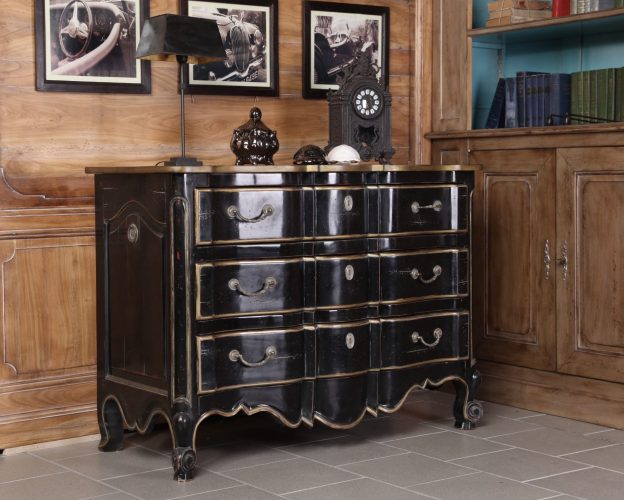
PEOPLE XIV
Louis XIV style is characterized by monumentality and consonance with the Antiquity, the richness of decorative elements: the furniture is decorated with carvings, mosaics, and bronze fittings. And while massive furniture is usually carved, the more sophisticated (lightweight) furniture is often multicolored. A lot of gilding is used, and the facades are decorated with a lot of decorative elements. There is a combination of different types of wood, inlays of scales, pewter and leather, and ivory strips framing the panels. Famous and popular are massive balls of wood as elements of furniture decoration. Acanthus leaves, garlands and branch-like ornaments, festoons, lambrequins and scrolls become an integral part of the composition of this style. In the decor, floral motifs are replaced by abstract patterns, as well as masks, heads of fauns, lions, and shells. And although the structure of the furniture is still massive and dominated by rectangular forms, there is gradually a hint of curves: the legs sag, the fronts round off, and the backs of chairs end in a semi-circle.
REGENT
Furniture made in the Regency style is more graceful, the pomposity is gone. The shapes sag. Curvature becomes a dominant feature and technique: the fronts of dressers take the form of a bow, chair legs resemble “deer legs”. In the furnishings begin to appreciate elegance and comfort rather than glitz and pomposity. In a certain sense, Regency style furniture is on the threshold of modern furniture, because it ceases to be solely decorative elements, and demonstrates the functionalism and desire for comfort. In the decoration of furniture, rich carvings are still used, which begins to be distinguished by symmetry and the observance of proportions. As a rule, one type of wood is used, and the effects are achieved by combining different directions of the fibers of the same material. Thus performed lozenge motifs. The furniture is decorated with massive bronze plaques, which not only decorate it, but also well protect the most vulnerable places.
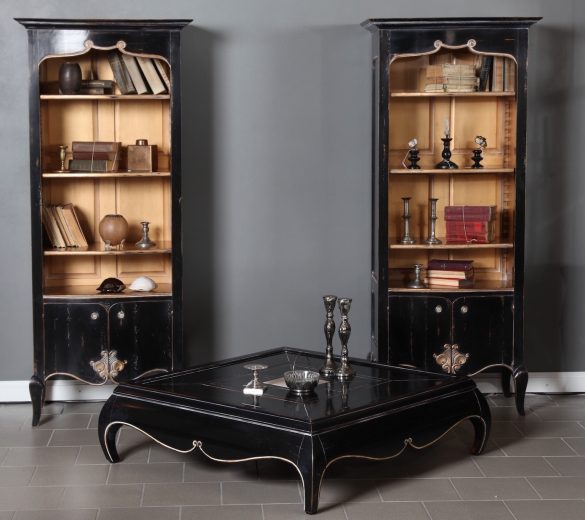
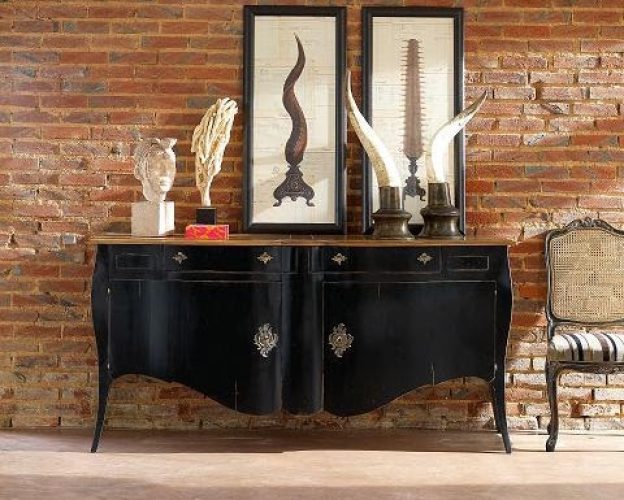
PEOPLE XV
During this period, the concept of style takes on its true meaning. The gallant, elegant and refined king himself becomes a model of style. He’s not looking for grandeur or scope, but sophistication. The style of Louis XV can be called the style of temptation, although it is a logical continuation of the Regency style. It is also characterized by the predominance of curved lines, the curve – the main technique in creating furniture. The form becomes an element of decor. The sink appears – a favorite trick of decorating furniture. Cabinetmakers reach the peaks of skill, using in their business, not only precious rare species of wood, but also achieving the necessary drawings of wood by different ways of sawing the material: along and across the fiber, as well as diagonally to the fiber. Characteristic is the emergence of new models of small furniture that meet the new needs of society: secretaries, ladies’ tables, tables for playing cards , portable tables, nightstands, corner cabinets, dressers. They bring a sense of sophistication and comfort to the everyday prosperous life of the XVIII century.
PEOPLE XVI
The main feature of this style is a return to simplicity. Decorative art is settling down: excess has no place. Perhaps this development was influenced by the discovery of the ruins of Pompeii. The fashion for “Greek” arrives and it is in this environment that the Louis XVI style is born: frivolous and seductive. Favored curves give way to straight lines. Simplicity and clarity of composition becomes the main value. However, the influence of Antiquity does not lead to a blind copying of its forms and techniques. Rather, it inspires and paves the way for the development of Louis XVI’s graceful style. It should be noted the enormous influence that Marie Antoinette had on the formation of style. It is she who gives the impetus for its development and gives it an obvious femininity. In the second half of the eighteenth century, everyone is fascinated by the pastoral. Nature is omnipresent in furniture. Garlands of flowers, ribbons tying bouquets, baskets of herbs very often decorate furniture. Its surface shows floral inlays and mosaics. Between two poles: one characterized by crisp straight lines and geometric designs, and the other with its bucolic motifs, the Louis XVI style easily equilibrates. The idea of comfort dominates the style. Since there is a reduction in space and a desire for intimacy in the interior, the setting itself participates in this process. Louis XVI style furniture is not designed to show off the luxury and grandeur of its owner, but to please and serve him.
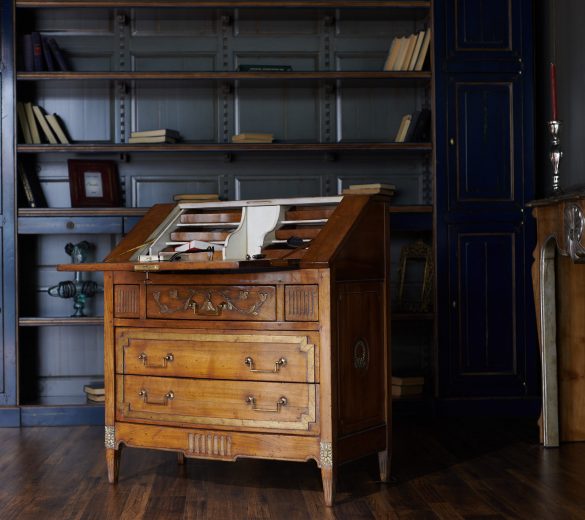
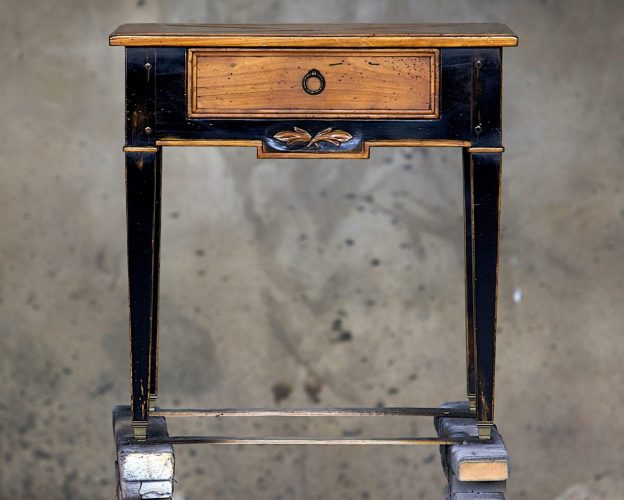
DIRECTORY
Directoire is a transitional style between Louis XVI and Empire styles. Everything is dominated by neo-classicism, a return to ancient techniques applies not only to furniture but also to painting, architecture, and sculpture. The Directoire style is characterized by strict lines and avoids excesses. A lot of mosaics, which are sometimes replaced either by inlays of bronze, copper and light wood, or by carved solid motifs. Acaju is very popular – mahogany. Two trends can be observed: one oriented toward Ancient Rome (curule chairs appear, chair legs take the form of a saber), and the other toward Egypt (winged sphinxes, images of heads in typical headdresses become a favorite motif). At the same time do not lose their relevance and also enjoy the interest of the Greek geometric ornament, it can be seen in the center of the panels as an independent pattern, and auxiliary, for example in the form of a frame. Antique ornaments are strikingly theatrical: legs in the form of caryatids, winged griffins and sphinxes. Oddly enough, motifs depicting the political life of the time are rare: rarely can we see flags, Phrygian caps and patriotic chants on the furniture.
AMPIR
Furniture in the Empire style is built on clear schemes with the predominance of straight lines. A rectangle defines shapes. The flat surfaces are decorated in the center with bronze overlays. The stubs disappear, the edging is also not used. The beauty of the tree itself is considered sufficient. The cabinetmakers no longer use mosaics to enliven the decor. Bronze, on the other hand, creates a contrast with the dark wood and enhances the warmth emanating from it. The addition of round and semi-circular columns, caryatids or various sculptures (heads of lions, sphinxes, winged angels, heads of rams, griffons) that serve as supports for the furniture, give the furniture the character of an elaborate architectural ensemble. The main elements of the ornament include laurel leaves, vine branches, ferns, stars, eagles, as well as anything that can evoke thoughts of greatness and power, not forgetting Napoleonic. Sometimes a little massive furniture in the style of the Empire is distinguished by the amazing quality of workmanship and perfection of the final workmanship. The small pieces of furniture that were popular in the 18th century are disappearing, giving way to large stately furniture that integrates with the surrounding still architecture. Interior decoration is designed to create balance and stability. Strict symmetry is observed: nothing moves and furniture does not move.


